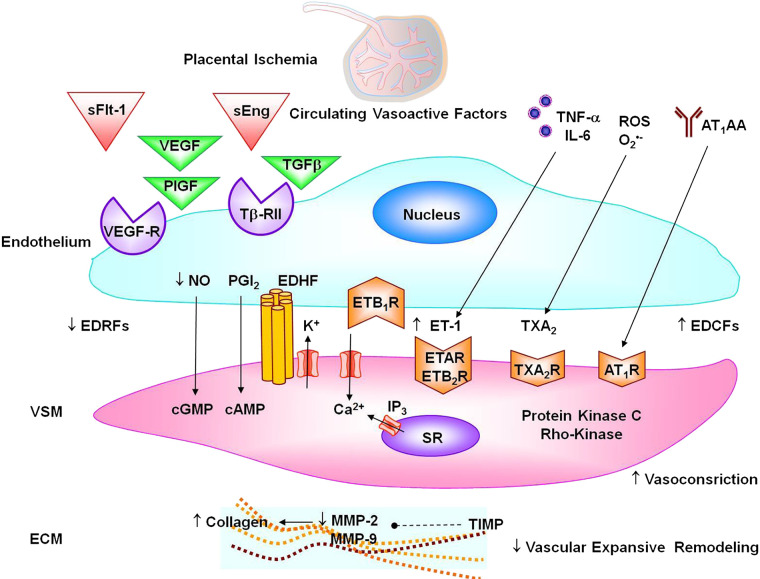Fig. 5.
Vascular targets in preeclampsia. Circulating soluble fms-like tyrosine kinase-1 (sFlt-1) and soluble endoglin (sEng) prevent VEGF, placental growth factor (PlGF), and transforming growth factor-β (TGF-β) from interacting with their natural endothelial cell receptors VEGFR and Tβ-RII, leading to decreased endothelium-derived relaxing factors (EDRFs) nitric oxide (NO), prostacyclin (PGI2), endothelium-derived hyperpolarizing factor (EDHF), and endothelial ETB1R; decreased vascular smooth muscle (VSM) cyclic guanosine monophosphate (cGMP), cAMP, and hyperpolarization; and increased VSM Ca2+ and contraction. Circulating cytokines and reactive oxygen species (ROS) cause increases in endothelium-derived contacting factors (EDCFs) endothelin-1 (ET-1) and thromboxane A2 (TXA2) and stimulation of VSM endothelin receptor type A (ETAR), ETB2R, and TXA2R. Angiotensin II type 1 receptor agonistic autoantibodies (AT1AA) agonistic autoantibodies activate VSM angiotensin II type 1 receptor (AT1R). Activation of vasoconstrictor receptors in VSM causes stimulation of Ca2+ influx through Ca2+ channels and Ca2+ release from the sarcoplasmic reticulum (SR) and activation of protein kinase C and Rho-kinase, leading to further increases in VSM contraction. Vasoactive factors could also decrease matrix metalloproteinase (MMP)-2 and MMP-9 in extracellular matrix (ECM) either directly or indirectly through increasing tissue inhibitor of metalloproteases (TIMP), leading to increased collagen deposition and reduced vascular expansive remodeling.

